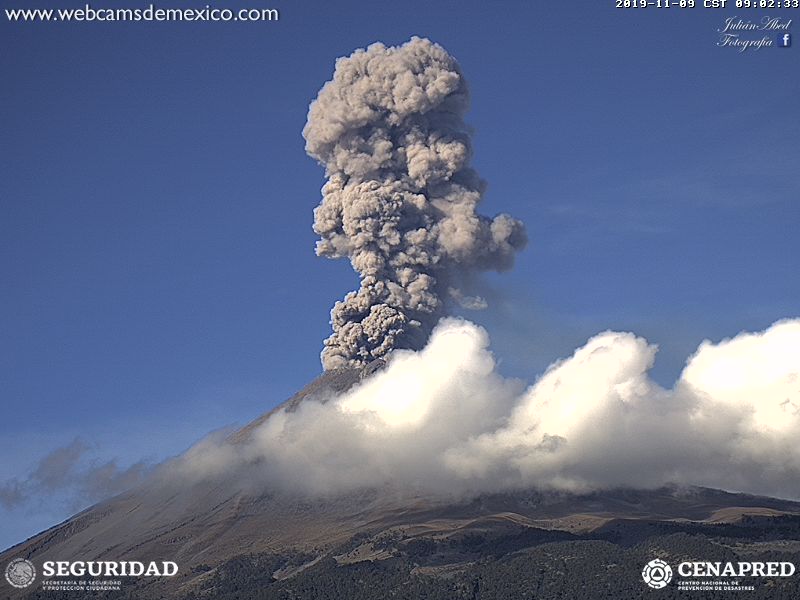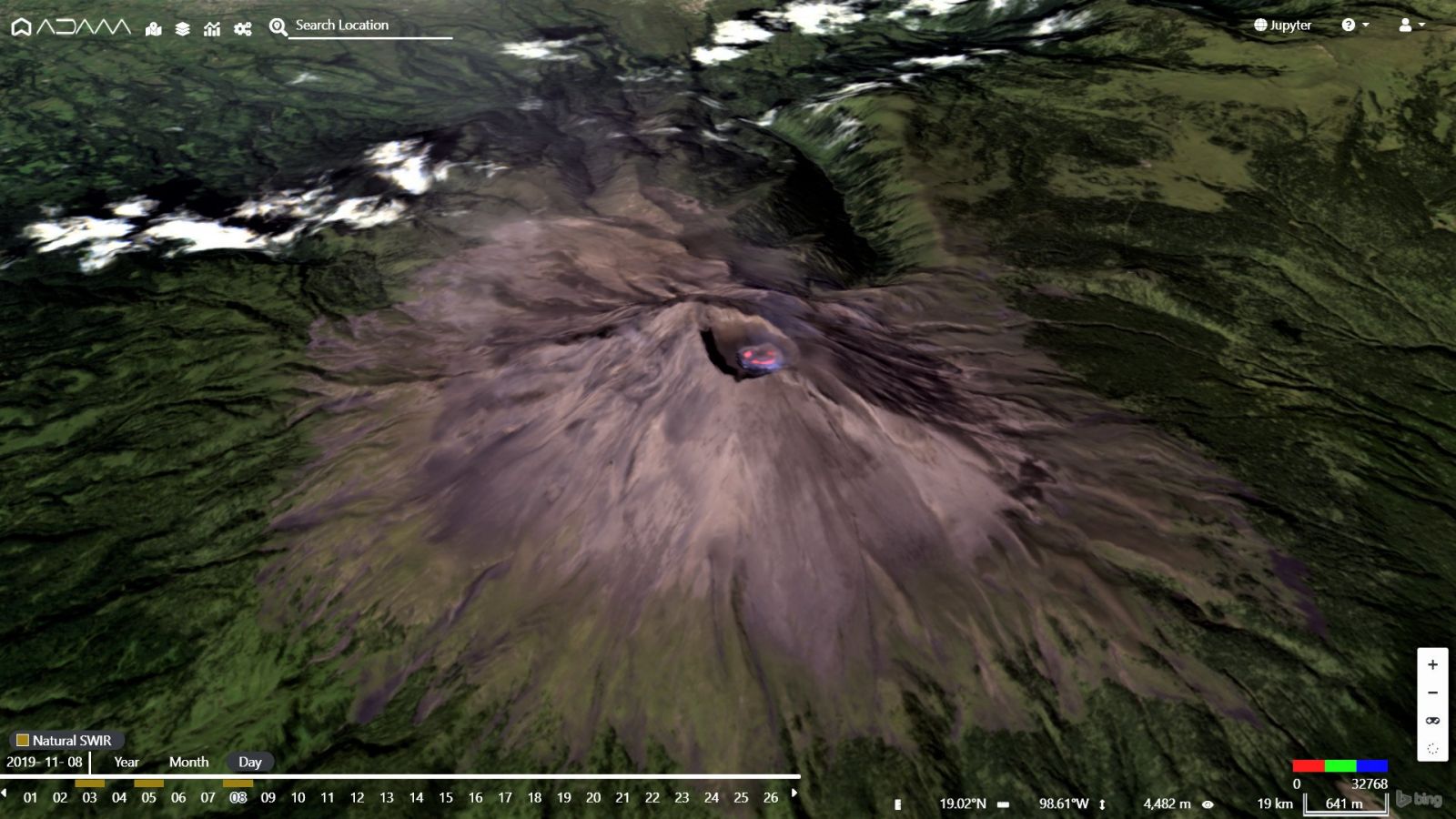Strong explosion at Popocatepetl volcano, continuous VA emission, Mexico

Continuous emission of volcanic ash began at Mexico's Popocatepetl volcano at 15:00 UTC on November 9, 2019. At 15:46 UTC, ash was rising up to 7.3 km (24 000 feet) above sea level.
According to data provided by the Washington VAAC, the ash cloud is moving NW at 9 km/h (6 mph) and extending 60 km (37 miles) from the summit at 18:06 UTC.
In 24 hours to 16:00 UTC on November 9, CENAPRED registered 64 long period events, accompanied by steam, gas and sometimes small amounts of ash.
The most important ones took place at 14:58 UTC (08:58 LT) and at 15:41 UTC (09:41 LT), both with a heigh of 2 km (1.2 miles) NW. Between these two exhalations, there was an explosion at 15:23 UTC (09:23 LT). Additionally, 52 minutes of tremor were recorded.



A reconnaissance overflight was made on November 5.
CENAPRED reported they observed the formation of dome number 85, with a diameter of 210 m (690 feet) and an irregular surface. The internal crater maintains a diameter of 350 m (1 150 feet) and its approximate depth of 90 m (295 feet).




Popocatepetl volcano on November 8, 2019. Credit: ESA/Sentinel-2, Antonio Vecoli
Geological summary
Volcán Popocatépetl, whose name is the Aztec word for smoking mountain, rises 70 km (44 miles) SE of Mexico City to form North America's 2nd-highest volcano. The glacier-clad stratovolcano contains a steep-walled, 400 x 600 m (1 312 x 1 968 feet) wide crater.
The generally symmetrical volcano is modified by the sharp-peaked Ventorrillo on the NW, a remnant of an earlier volcano.
At least three previous major cones were destroyed by gravitational failure during the Pleistocene, producing massive debris-avalanche deposits covering broad areas to the south. The modern volcano was constructed south of the late-Pleistocene to Holocene El Fraile cone.
Three major plinian eruptions, the most recent of which took place about 800 CE, have occurred from Popocatépetl since the mid Holocene, accompanied by pyroclastic flows and voluminous lahars that swept basins below the volcano. Frequent historical eruptions, first recorded in Aztec codices, have occurred since precolumbian time. (GVP)
Featured image credit: CENAPRED

Commenting rules and guidelines
We value the thoughts and opinions of our readers and welcome healthy discussions on our website. In order to maintain a respectful and positive community, we ask that all commenters follow these rules:
We reserve the right to remove any comments that violate these rules. By commenting on our website, you agree to abide by these guidelines. Thank you for helping to create a positive and welcoming environment for all.